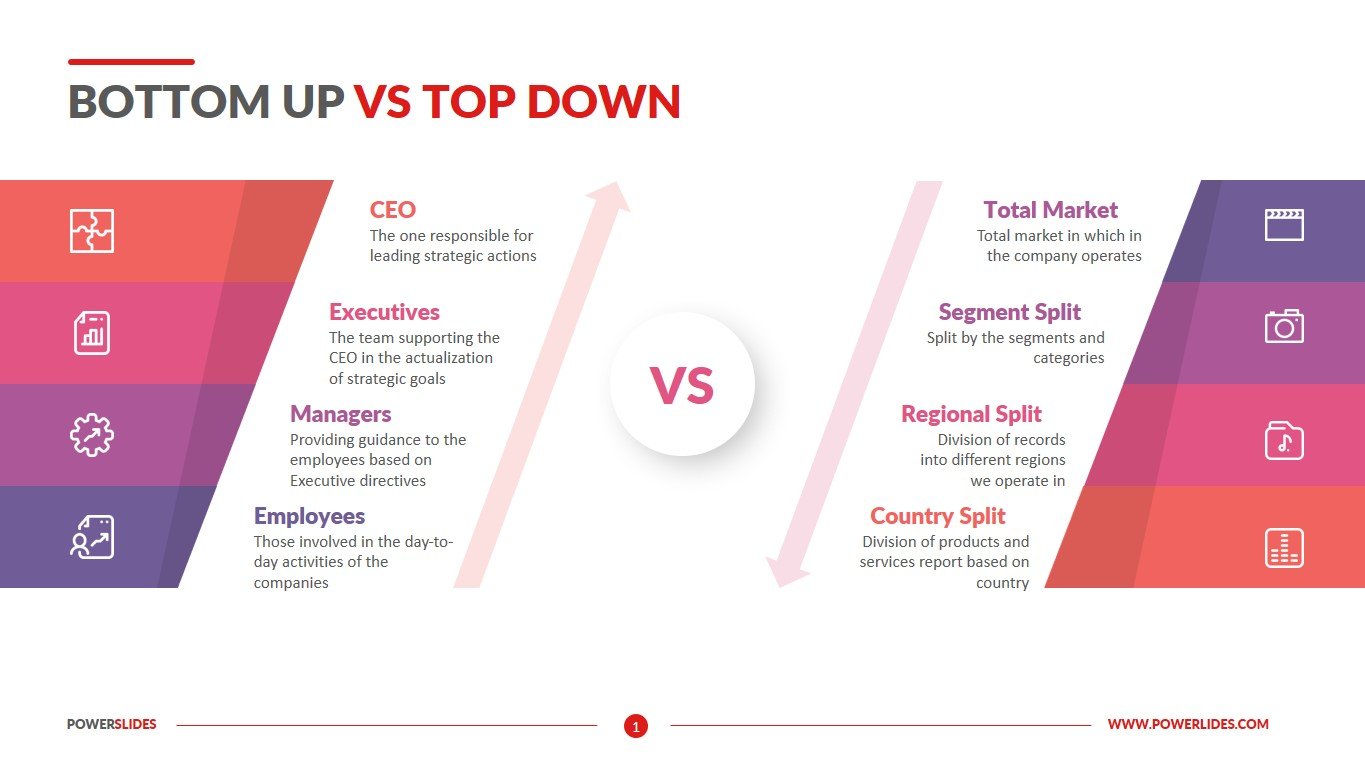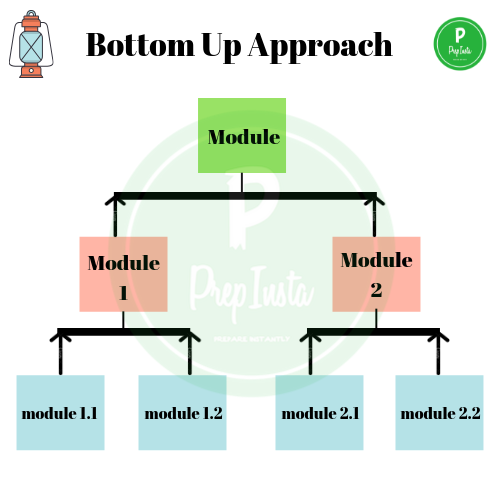Table Of Content

By involving all team members in the decision-making process, the bottom-up approach fosters a sense of ownership and responsibility, leading to increased motivation and satisfaction. This approach can be particularly effective in dynamic industries where adaptability and creativity are crucial for success. However, one of the main drawbacks of top-down management is the potential lack of creativity and innovation, as decisions are made primarily by a select few individuals at the top of the organizational structure. This can result in a stifling environment where employees may feel disengaged and disconnected from the company’s overall objectives. Furthermore, top-down management can lead to a lack of high-level insight, as the focus is primarily on the directives of upper management. In today’s dynamic business landscape, striking the right balance between top down vs bottom up management approaches is crucial for success.
LogRocket generates product insights that lead to meaningful action
The top-down approach is the stepwise process of breaking of the large program module into simpler and smaller modules to organise and code program in an efficient way. The top-down approach is implemented in the “C” programming language by using functions. A top-down approach is a management style where the leaders or executives set the goals, objectives, and strategies for the organization.

When to use the top-down approach
Company size and structure play a significant role in determining the most suitable management approach for your organization. Larger organizations with multiple teams and departments may benefit from a top-down approach, as it provides clear directives and a unified vision that can be easily communicated across the entire company. This approach allows for efficient decision-making and streamlined processes, ensuring that all employees are aligned with the company’s goals and objectives. These elements are then linked together to form larger subsystems, which in turn are linked, sometimes at many levels, until a complete top–level system is formed. This strategy often resembles a "seed" model, by which the beginnings are small, but eventually grow in complexity and completeness.
Difference between Bottom-Up Model and Top-Down Model
Top-down analysis begins at the macro level, looking at things like national economic data (e.g., GDP or unemployment) and then homing in on more micro variables. A bottom-up approach is the opposite, beginning micro (e.g. looking at a single company's financial statements) and then broadening out. In the end, there is no single best approach to investing, and every approach has its own pros and cons. A robust strategy is to employ features from both top-down and bottom-up together.
Each approach offers unique benefits and presents specific challenges, depending on the organizational context and the desired outcomes. The bottom up approach emphasizes the importance of individual contributions and grassroots initiatives, while the top-down approach focuses on strategic direction and centralized decision-making. Generally, the bottom-up approach focuses its analysis on specific characteristics and micro attributes of an individual stock. In bottom-up investing concentration is on business-by-business or sector-by-sector fundamentals.
Program Code – The Power of Bottom–Up Design in Software Development
The distinct feature of our courses is the great emphasis on the practical application of the software to solve real world problems. The self-study courses start from the very basic concepts and teach advanced techniques step by step. Kyla is part of the Marketing team at Kumospace, where she helps run the social media accounts and creates content.
Build relationships outside the management team
One can see the inverse effect that top–down control has in this example; when the population of otters decreased, the population of the urchins increased. This method manifested itself in the study of translating small-scale organizational systems to a larger, more architectural scale (as with the wood panel carving and furniture design). Bottom–up and top–down are both strategies of information processing and ordering knowledge, used in a variety of fields including software, humanistic and scientific theories (see systemics), and management and organization.
The People-First, Bottom-Up Approach to M&A - BRINK
The People-First, Bottom-Up Approach to M&A.
Posted: Sun, 29 Aug 2021 07:00:00 GMT [source]
What Is the Main Difference Between a Top-Down and Bottom-Up Approach?

These elements are then linked together to form larger subsystems, which then in turn are linked, sometimes in many levels, until a complete top-level system is formed. This strategy often resembles a "seed" model, by which the beginnings are small but eventually grow in complexity and completeness. But "organic strategies" may result in a tangle of elements and subsystems, developed in isolation and subject to local optimization as opposed to meeting a global purpose.
More of a strain on leadership
The top-down approach is probably what you think of when you think of the management process. Traditional industries like retail, healthcare, or manufacturing typically apply the top-down management style. Many teams go with the top-down approach because it eliminates confusion, reduces risk, and keeps initiatives organized across larger teams. Below, we break down how the top-down approach compares to the bottom-up approach so you can decide which best fits your leadership style.
Mills created a concept of structured programming that aided in the increased quality and decreased time dedicated to creating a computer program. This process was then successfully tested by Mills in an effort to automate the New York Times morgue index. Similarly, Wirth developed a programming language, named Pascal, that relied on the top-down approach to build this particular system. From these studies completed by both Mills and Wirth, the top-down approach evolved into the popular management style discussed earlier.
The bottom-up approach, on the other hand, empowers employees to collaborate and make decisions, fostering a sense of ownership and responsibility within the team. This approach encourages innovation and employee engagement by involving the entire workforce in the decision-making process. Bottom-up management is often observed in progressive industries such as software development and product design, where collaboration and creativity are crucial to success.
This analysis seeks to identify profitable opportunities through the idiosyncrasies of a company’s attributes and its valuations in comparison to the market. A bottom-up approach is where the employees or lower levels of the organization are involved in the decision-making process. They are encouraged to share their ideas, opinions, and feedback with the leaders or executives, who then consider them before making the final decisions. In top-down processes, there are fewer opportunities for teams to give input or suggestions. Collaborative approaches like the bottom-up approach, on the other hand, create opportunities for feedback, brainstorming, and constructive criticism that often lead to better systems and outcomes.
In collaborative settings, those who work directly on projects and oversee project management can speak to the decisions that will impact their future work. Upper managers work directly with team members to chart a course of action, which prevents potential process blind spots that might otherwise appear when decisions are made without team input. There are benefits to a top-down management style, especially for larger teams that consist of multiple smaller teams or groups that function together in a broader organizational hierarchy. The top-down approach to management is a strategy in which the decision-making process occurs at the highest level and is then communicated to the rest of the team. This style can be applied at the project, team, or even the company level, and can be adjusted according to the particular group’s needs.
Integrating both approaches and leveraging platforms like Kumospace can help create a balanced management style that caters to the specific needs of your organization, ensuring success in today’s dynamic business landscape. The top-down and bottom-up approaches represent two distinct strategies in the realm of management and decision-making. The top-down approach is characterized by decisions being made by senior leaders and upper management, who then disseminate these decisions throughout the organizational structure. Conversely, the bottom-up approach enables employees to collaborate and make decisions, promoting innovation and employee engagement.
No comments:
Post a Comment